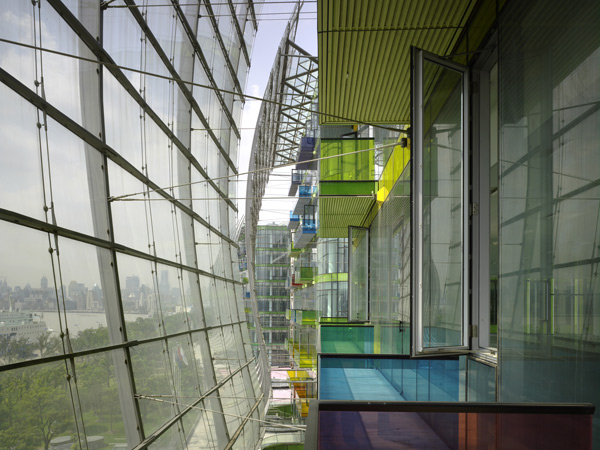Years in the making, the prominent project, designed by the Shanghai office of Sparch, will wrap up construction next year.
 |
| Photo © Christian Richters. |

After eight years in development, the Shanghai International Cruise Terminal will soon be completed. The architecture firm Sparch began work on the multi-use project (and opened its Shanghai office) in 2004, broke ground on the site in 2006, and will be fitting out its final buildings there in early 2012. In designing the project, the firm had to consider two nearby districts: the concession-era buildings of the Bund, and the recent skyscrapers of Pudong across the Huangpu River. Located at the third point in a prominent triangle, the cruise terminal presented a unique opportunity. “We wanted to make a gateway to the city,” says John Curran, co-founder of Sparch and head of its Shanghai office, “and it needed to have that iconic ‘wow’ factor to it.”
The firm started by designing a master plan that includes buildings with a total of 2.8 million square feet of space. Sparch is also responsible for detailed design of the east side of the site, which includes landscaping and buildings with 1.6 million square feet of above-ground space. New York architect Frank Repas designed an additional four buildings on the east site as well as the landscaping and passenger facilities on the west.
Sparch’s contribution includes an 18-story, street-side office tower; a dock to accommodate 80,000-ton cruise ships and an estimated 1.5 million annual visitors; and a feature-filled “culture street” with a sunken food court, a winter garden, a gallery shaped like a peanut (and nicknamed as such); and areas to be developed for fashion events, product launches, and public performances.
Within this mix the cruise terminal’s six riverside office pavilions stand out. The pavilions, used as headquarters for international shipping companies, are built low to allow inland properties a view of the Huangpu. To minimize the height of the buildings Sparch put as much habitable space below ground as above ground and dug sunken courtyards to bring in daylight. Viewed from its street side, each pavilion has a different shape and identifying colored band of red, green, yellow, or blue. The project’s client, Franshion Properties, suggested adding colors to the buildings and Sparch agreed. “Shanghai can be so gray,” says Curran. “When you go into an environment that feeds your eyes with some color, it’s quite nice.”
On the riverside, wavelike, projecting screens provide solar shading to the south-facing walls and to the scattered balconies, again in vibrant colors. “We were thinking, ‘How do we make a statement that would be a confident, 21st-century expression of the Bund’s sweeping curve?’” says Curran.
The line of pavilions is broken by the cruise terminal’s main “wow factor,” dubbed the “Shanghai Chandelier” by its architects. Because the Shanghai government pushed for cultural programming on the site, this building was designed as a 130-by-130-foot bridge from which egg-shaped forms hang on cables and contain spaces for public use. To help figure out the structure, Sparch worked with engineers at Arup and Weidlinger. And to mold the eggs’ GRP skins, the firm brought in a lifeboat maker. Central elevators and a chutes-and-ladders-like circulation system allow users to move between an exhibition space in one egg and bars and restaurants in the other eggs and in the top of the bridge.
The chandelier’s frame can hold a 130-by-130-foot retractable screen for outdoor digital projections. And the public will have access to a large waterfront park at the site, as 60 percent of the land area has been left open as requested by the city. In this way the site continues the popular pedestrian zone along the Bund, redesigned and reopened for the World Expo in 2010. By choosing to follow the Bund’s example, rather than Pudong’s disconnected relationship to the river, the Shanghai International Cruise Terminal suggests a better integrated way of developing waterside projects for the future.
